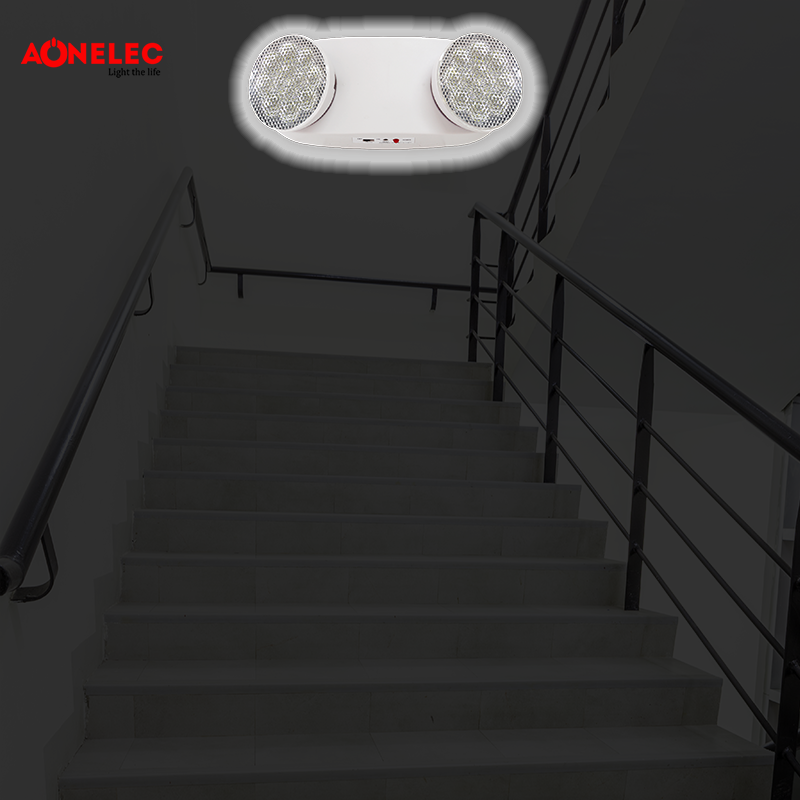All
- All
- Product Management
- News
- Introduction
- Enterprise outlets
- FAQ
- Enterprise Video
- Enterprise Atlas
Enhancing Safety with Twin Head Emergency Lights: A Comprehensive Guide
2025-06-21
In the field of emergency lighting, the twin head emergency light stands out as a vital component for ensuring safety and visibility during critical situations. These fixtures are designed to provide efficient lighting in the event of a power outage, making them indispensable in commercial, industrial, and residential settings.
One of the primary advantages of twin head emergency lights is their dual illumination capability. Equipped with two adjustable heads, these lights can be directed towards different areas, maximizing coverage and visibility. This feature is particularly useful in large spaces, such as warehouses or office buildings, where a single light source may not suffice. By strategically positioning the twin heads, facilities can ensure that exit routes and critical areas remain well-lit, thereby reducing the risk of accidents during emergencies.
Furthermore, twin head emergency lights typically utilize LED technology, which offers numerous benefits over traditional lighting options. LEDs are energy-efficient, providing high lumen output while consuming less power. This efficiency not only lowers energy costs but also extends the operational lifespan of the lights, reducing maintenance needs. Additionally, many modern twin head emergency lights come with built-in battery backup systems that automatically engage during power failures, ensuring uninterrupted illumination when it's needed most.
Another important aspect to consider when selecting twin head emergency lights is their compliance with safety standards and regulations. Different regions have varying codes regarding emergency lighting, and it's crucial to ensure that any lighting solution adheres to local requirements. This compliance not only enhances safety but also protects businesses from potential liabilities associated with inadequate emergency preparedness.
When installing twin head emergency lights, strategic placement is key. These fixtures should be mounted in areas where they can provide optimal visibility and coverage, such as near exits, stairwells, and hallways. Conducting a thorough risk assessment can help identify high-risk areas that may require additional lighting. Regular maintenance and testing of emergency lighting systems are also essential to ensure that they function correctly when needed.
In conclusion, twin head emergency lights represent a significant advancement in emergency lighting solutions. Their dual-head design, energy efficiency, and compliance with safety regulations make them an excellent choice for enhancing safety in various environments. By investing in quality emergency lighting, businesses can ensure that they are prepared for emergencies, providing peace of mind for both employees and customers alike.
One of the primary advantages of twin head emergency lights is their dual illumination capability. Equipped with two adjustable heads, these lights can be directed towards different areas, maximizing coverage and visibility. This feature is particularly useful in large spaces, such as warehouses or office buildings, where a single light source may not suffice. By strategically positioning the twin heads, facilities can ensure that exit routes and critical areas remain well-lit, thereby reducing the risk of accidents during emergencies.
Furthermore, twin head emergency lights typically utilize LED technology, which offers numerous benefits over traditional lighting options. LEDs are energy-efficient, providing high lumen output while consuming less power. This efficiency not only lowers energy costs but also extends the operational lifespan of the lights, reducing maintenance needs. Additionally, many modern twin head emergency lights come with built-in battery backup systems that automatically engage during power failures, ensuring uninterrupted illumination when it's needed most.
Another important aspect to consider when selecting twin head emergency lights is their compliance with safety standards and regulations. Different regions have varying codes regarding emergency lighting, and it's crucial to ensure that any lighting solution adheres to local requirements. This compliance not only enhances safety but also protects businesses from potential liabilities associated with inadequate emergency preparedness.
When installing twin head emergency lights, strategic placement is key. These fixtures should be mounted in areas where they can provide optimal visibility and coverage, such as near exits, stairwells, and hallways. Conducting a thorough risk assessment can help identify high-risk areas that may require additional lighting. Regular maintenance and testing of emergency lighting systems are also essential to ensure that they function correctly when needed.
In conclusion, twin head emergency lights represent a significant advancement in emergency lighting solutions. Their dual-head design, energy efficiency, and compliance with safety regulations make them an excellent choice for enhancing safety in various environments. By investing in quality emergency lighting, businesses can ensure that they are prepared for emergencies, providing peace of mind for both employees and customers alike.
Previous Page
Previous Page
Related News


